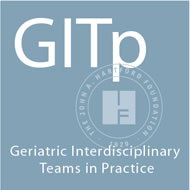Featured Initiative:

Introduction
For thirty years, experts have warned that the United States' health care system, which is focused primarily on acute care, is unprepared to provide adequate chronic care for the aging “baby boom” generation. Despite these admonitions, America's health care policies and providers have not focused on chronic care. Its hospitals, nursing homes, outpatient clinics, and home care agencies still operate as uncoordinated silos and the quality and efficiency of chronic care in America remain far from optimal.
The cost of fragmented, inefficient chronic care is high. Medicare beneficiaries with four or more chronic conditions account for 80 percent of Medicare spending,1 which totaled $402 billion in 2006.2 American medicine stands at a worrisome crossroads as the first baby boomers near retirement age. Without prompt transformation, chronic care in America will soon become unsustainably expensive. Re-designing primary care to provide high-quality chronic care requires new and realistic strategies.
 To help bridge the gap between the growing need for high-quality
chronic care and the present fragmented, acute care-oriented delivery
system, the John A. Hartford Foundation has made a long-term
commitment to fund the creation and dissemination of new conceptual
models of chronic care for the nation's older adult population. At the
heart of an effective geriatric chronic care system is a strong
interdisciplinary team. Studies have shown that innovations in
interdisciplinary team care, enhanced decision support, improved
clinical information systems, support for self-management, and better
access to community resources can improve clinical and/or financial
outcomes in outpatient settings,3 in the home, and during transitions
between sites of care.4
To help bridge the gap between the growing need for high-quality
chronic care and the present fragmented, acute care-oriented delivery
system, the John A. Hartford Foundation has made a long-term
commitment to fund the creation and dissemination of new conceptual
models of chronic care for the nation's older adult population. At the
heart of an effective geriatric chronic care system is a strong
interdisciplinary team. Studies have shown that innovations in
interdisciplinary team care, enhanced decision support, improved
clinical information systems, support for self-management, and better
access to community resources can improve clinical and/or financial
outcomes in outpatient settings,3 in the home, and during transitions
between sites of care.4
Over the past two decades, concepts of interdisciplinary team care have been woven into many of the Foundation's grants in the areas of medicine, nursing, and social work. These concepts have been directly addressed in a series of initiatives starting in 1992 with the Generalist Physician initiative and culminating in current efforts to disseminate models of team care developed under the Geriatric Interdisciplinary Teams in Practice (GIT-P) grants. Four strong models of team care-the Care Transitions Intervention, Care Management Plus, Senior Health and Wellness Clinic, and Virtual Integrated Practice-have shown improvements in health care quality and cost, and are being actively promoted to achieve widespread adoption.
Bringing change to health care delivery is a difficult undertaking. The Hartford Foundation employs three core strategies in its efforts to transform the health care system to improve care: prove and promote innovations in health care delivery, articulate the financial impact and benefits to make the case for adoption, and shape the system to demand innovation.
The Hartford Foundation's commitment to improving the health of our
nation's elders has led to significant shifts and broad dissemination
of innovations across care settings. Through these efforts, the
Foundation has a direct and major impact on the care of older adults
across the country.
Next: Improving Care for the Chronically Ill ›
1- Wolff JL, Starfield B, Anderson G. Prevalence, expenditures, and
complications of multiple chronic conditions in the elderly. Arch Intern
Med 2002;162:2269-76.
2- Annual Report of the Board of Trustees of the Federal Hospital
Insurance and Federal Supplementary Medicare Insurance Trust Fund.
Paulson, H. M., Chao E., Leavitt M. O. et al (online). Available at
http://www.cms.hhs.gov/ ReportsTrustFunds/downloads/tr2007.pdf.
Accessed January 22, 2008.
3- Counsell SR, Callahan CM, Clark DO et al. Geriatric care management
for low-income Seniors: A randomized controlled trial. JAMA
2007;98(22):2623-33.
4- Coleman EA, Min S, Chomiak A, Kramer AM. Post-hospital care
transitions: patterns, complications, and risk identification. Health
Serv Res. 2004;39:1449-1465.
